UBC Local 2486
Be a professional
Professional carpenter

What types of jobs are done by carpenters?
Carpenters measure, saw, level and nail wood and other building materials. They install tile and insulation, acoustical ceilings, cabinets, sliding and mcuh more. They work with many tools and mateials to build houses, schools, churches and hotels. They erect skyscrapers, hospitals, office buildings and construct bridges, tunnels and highways. Carpenters make up the largest single group of skilled workers in the country.
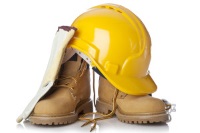 What type of hours and working conditions are involved?
What type of hours and working conditions are involved?
A typical carpenter’s workday lasts 8 hours, starting on the job site before daybreak. Much of the work is outdoors, but modern construction methods have solved the problems of extreme heat or freezing temperatures. Attention to health and safety is stressed all the time, because of the machinery, tools, materials and equipment used in this trade. Carpenters wear a hard hat, durable work clothes and safety shoes.
 Does my high school coursework matter?
Does my high school coursework matter?
You can get a head start on becoming a carpenter by studying math and enrolling in shop work in school. Classes in industrial arts and mechanical drawing will help you decide whether or not you have an interest in this trade.

What is an apprentice?
An apprentice is someone who is in the process of becoming a skilled carpenter through training and experience. Apprentices are earning a good income and learning a trade, all at once. Apprentices study both in the classroom and on-the-job under the guidance of skilled workers of that trade, called journeymen. From the first day of your apprenticeship, you are paid a wage and start to earn benefits. You also get regular raises, usually every six months, until you reach the full journeyman scale at the end of the apprenticeship program. In most cases the length of your apprenticeship is four years, and your training is free.
 What makes this opportunity so special?
What makes this opportunity so special?
The rewards of apprenticeship training are the good wages and benefits you receive as a skilled craft-person. Union carpenters belong to the United Brotherhood of Carpenters and Joiners of America and benefit from the security of being professional tradesmen. You will be working for a union contractor under the protection of a union contract, which means that you will probably have some form of health insurance and pension and welfare benefits. It pays to be the best you can be: an apprentice-trained professional carpenter.
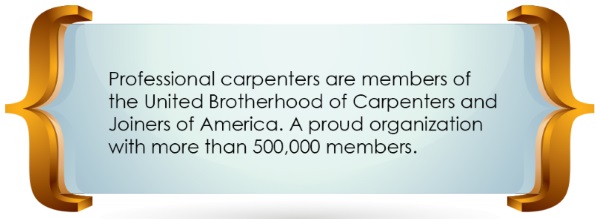
Floor covering professional

What types of jobs are done by floor covering pros?
Floor covering professionals install a wide variety of flooring materials. Work is often done based on specifications of architects, facility managers or interior designers. To be effective, a floor layer must be an keen estimator of materials and comprehend pattern layout before the actual installation begins. It is also important for flooring professionals to know the safe and proper use of many types of tools, adhesives and fastening systems. A floor layer may be asked to work on new or renovation projects for commercial, residential or institutional structures.
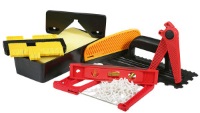 What type of hours and working conditions are involved?
What type of hours and working conditions are involved?
Floor covering professionals typically work in crews of two or more. Teamwork is a key component of any floor covering job site. Most of the work is indoors, except for the installation of outdoor carpets, surrounding pool surfaces, or sports surfaces. A typical floor coverer’s workday is eight hours. Attention to health and safety is stressed because of the machinery, tools, materials and equipment used in this trade. Floor covering pros are usually paid by the hour and as union members they get overtime pay for all work exceeding eight hours. Apprentices often start out on a job by helping to measure, cut, and learn to understand the tools and materials of the trade. As they gain experience, they move into more complicated jobs.
 Does my high school coursework matter?
Does my high school coursework matter?
You can get a head start on becoming a floor layer by studying math and enrolling in shop work in school. Classes in industrial arts and mechanical drawing will help you decide whether or not you have an interest in this trade.

What is an apprentice?
Apprentices are earning a good income and learning a trade, all at once. Apprentices study both in the classroom and on-the-job under the guidance of skilled workers of that trade, called journeymen. Form the first day of y our apprenticeship, you are paid a wage and start to earn benefits. You also get regular raises, usually every six months, until you reach the full journeyman scale at the end of the apprenticeship program. In most cases the length of your apprenticeship is four years, and your training is free.
 What makes this opportunity so special?
What makes this opportunity so special?
The rewards of apprenticeship training are the good wages and benefits you receive as a skilled craft-person. Union carpenters belong to the United Brotherhood of Carpenters and Joiners of America and benefit from the security of being professional tradesmen. You will be working for a union contractor under the protection of a union contract, which means that you will probably have some form of health insurance and pension and welfare benefits. It pays to be the best you can be: an apprentice-trained floor covering professional.
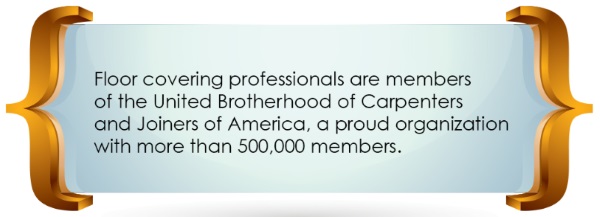
Drywall, acoustic & lathing professional

What types of jobs are done by drywall, acoustic & lathing professional?
These specialized workers install construction materials and a variety of factory-produced systems in commercial buildings and public structures. Their specialized skills are brought into play as they assemble complex interior systems using technical data supplied by manufacturers. Saws and hammers as well as mechanic’s tools such as drills, wrenches and screwdrivers are used most often. Welding skills are also needed for assembly work.
In order to achieve the spectacular creations demanded of a skilled lather, these professionals use tie wire, screws, nails, clips and staples to fasten metal studs, metal lath and drywall. The framework build by lathers is eventually covered by plaster, drywall materials or other finished surfaces.
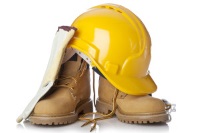 What type of hours and working conditions are involved?
What type of hours and working conditions are involved?
Interior systems carpenters generally work 8-hour days, often starting about 7 a.m. Many of the installations erected by interior systems carpenters come carefully marked and crated. Journeymen and apprentices alike must carefully read instructions and specifications. As the title indicates, it is mostly inside work but also includes some exterior work. Sometimes it’s at floor level or it’s above the floor on scaffolds. Sturdy work clothes are worn, and, when necessary, special safety goggles and other gear are worn.
 Does my high school coursework matter?
Does my high school coursework matter?
You can get a head start on becoming a carpenter by studying math and enrolling in shop work in school. Classes in industrial arts and mechanical drawing will help you decide whether or not you have an interest in this trade.
 What is an apprentice?
What is an apprentice?
An apprentice is someone who is in the process of becoming a skilled carpenter through training and experience. Apprentices are earning a good income and learning a trade, all at once. Apprentices study both in the classroom and on-the-job under the guidance of skilled workers of that trade, called journeymen. Form the first day of your apprenticeship, you are paid a wage and start to earn benefits. You also get regular raises, usually every six months, until you reach the full journeyman scale at the end of the apprenticeship program. In most cases the length of your apprenticeship is four years, and your training is free.
 What makes this opportunity so special?
What makes this opportunity so special?
The rewards of apprenticeship training are the good wages and benefits you receive as a skilled craft-person. Union carpenters belong to the United Brotherhood of Carpenters and Joiners of America and benefit from the security of being professional tradesmen. You will be working for a union contractor under the protection of a union contract, which means that you will probably have some form of health insurance and pension and welfare benefits. It pays to be the best you can be: an apprentice-trained interior systems carpenter.

Source: https://carpenterslocal2486.com/be-a-professional